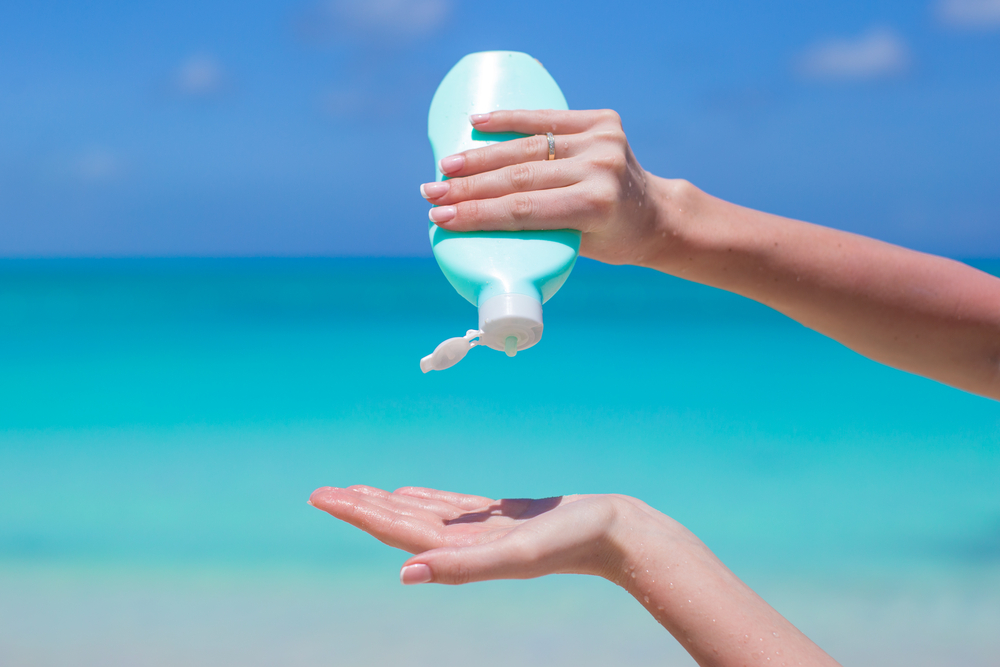It May Smell Nice, But Is Your Sunscreen Actually Protecting You?

The most popular sunscreens may not always be the most effective, a new study finds.
Nearly half of the sunscreens that researchers looked at in the study didn't meet all of the guidelines recommended by the American Academy of Dermatology (AAD).
A sunscreen needs to meet three criteria in order to fit into the AAD's guidelines: It must be broad spectrum, meaning it protects against both UVA and UVB rays; it must have a sun protection factor (SPF) of 30 or higher; and it must be water- and sweat-resistant. [5 Surprising Facts About Sunscreen]
But these criteria don't appear to play a major role in people's choices when they buy sunscreen, according to the study, led by Dr. Steve Xu, a dermatology resident at Northwestern University Feinberg School of Medicine in Chicago.
Rather, sunscreen purchases appear to be driven largely by what the researchers called "cosmetic elegance," or how the sunscreen feels when it is applied, what it smells like or what color it is.
In the study, the researchers looked at the top 1 percent of the 6,500 total sunscreens sold on Amazon.com, based on consumer ratings. All of the 65 sunscreens selected for the study had an average rating of 4 or more stars (the site lets consumers rate products on a scale from 1 to 5 stars), and had at least 150 reviews posted about them, according to the study.
To better understand these products' appeal, the researchers looked at the top five comments that reviewers had written about each product, meaning the comments that the highest number of Amazon users had rated as "helpful." The researchers sorted the comments into categories, based on what aspect of the sunscreen they addressed, according to the study. Categories included cosmetic elegance, product performance, skin compatibility and product ingredients.
Sign up for the Live Science daily newsletter now
Get the world’s most fascinating discoveries delivered straight to your inbox.
The researchers found that 26 of the 65 top sunscreens didn't meet all three AAD criteria. Water and sweat resistance was the criterion that the sunscreens most commonly failed to meet, according to the study. In fact, three out of the top four sunscreens were not water- or sweat-resistant, the researchers found.
Interestingly, nine out of the 10 least-expensive sunscreens included in the study met all three of the AAD guidelines, the researchers noted.
The most common type of comment that the researchers found were those about the products' cosmetic elegance, and the majority of these comments were focused on how the sunscreen felt on the skin. For example, consumers who gave positive comments frequently remarked that a sunscreen absorbed well into the skin, wasn't greasy or left the skin feeling smooth. On the other hand, negative comments mentioned that sunscreens were too thick or greasy, or that they left a residue on the skin, the researchers found.
Forty-two comments mentioned a sunscreen's pleasant smell, and 20 comments cited a bad smell ("It absolutely reeks," one commenter wrote), according to the study.
Comments about a sunscreen's performance were the second most common type of comment. The comments in this category included mentions of products' effectiveness, whether a reviewer got a sunburn, and the three AAD criteria (the SPF, whether it was broad spectrum, and whether it was water- and sweat-resistant). [How Long Does Sunscreen Last Before It Expires?]
Comments about other aspects of sunscreens, including how compatible they were with certain skin conditions and what active ingredients they contained, were less common, the researchers wrote.
The researchers hope to use these findings to make better recommendations to patients.
"You don't want to wear a chalky, greasy, terrible-smelling product, even if your dermatologist recommends it," Xu said in a statement. The findings "gave us insight into what consumers prefer, so [they] can guide our recommendations and be cost-conscious," he said.
The study was published today (July 6) in the journal JAMA Dermatology.
Originally published on Live Science.










